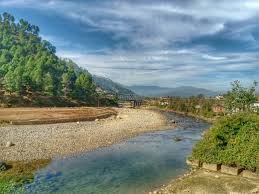Gomti River:

Uttar Pradesh Chief Minister recently launched the ‘Gomti Rejuvenation Mission’ to ensure the uninterrupted flow of the river, setting an ambitious target to intercept 95 percent of urban sewage entering the waterway.
- Gomti River is a tributary of the Ganges (Ganga) River, flowing entirely through the state of Uttar Pradesh.
- The river is also known by the names Gumti or Gomati.
- It originates from the Gomat Taal, otherwise called Fulhaar Jheel, a lake located in the Pilibhit District in Uttar Pradesh.
- The river drains the area between the Ramganga and Sharda Rivers.
- After flowing southwards through the districts of Lucknow, Barabhanki, Sultanpur, Faizabad, and Jaunpur, it joins with the River Ganga.
- The river extends to about 900 km.
- It drains a basin of about 18,750 sq.km.
- The entire Gomti basin is underlain by thick alluvial sediments of the Quaternary age.
- The alluvial sediments consist of boulders, pebbles, gravel, sand, silt, clay, and kankars.
- The unconsolidated unit may be further subdivided into younger alluvium and older alluvium.
- The younger alluvium occupies the present-day flood plains, while the older group occupies elevated portions, mainly the doab portions.
- The older alluvium is characterized by kankar nodules at depth otherwise it is similar to the younger alluvium.
- It is a perennial river. The river is characterised by sluggish flow throughout the year, except during the monsoon season, when heavy rainfall causes a manifold increase in the runoff.
- Significant tributaries of the Gomti include the Sai River, Chowka River, Kathina River, and Saryu River.
- There are various cities that are situated on the banks of River Gomti, such as Sultanpur, Lucknow, Jaunpur, and Lakhimpur Kheri.
- Over the years, Gomti has become one of the most polluted rivers in Uttar Pradesh.




